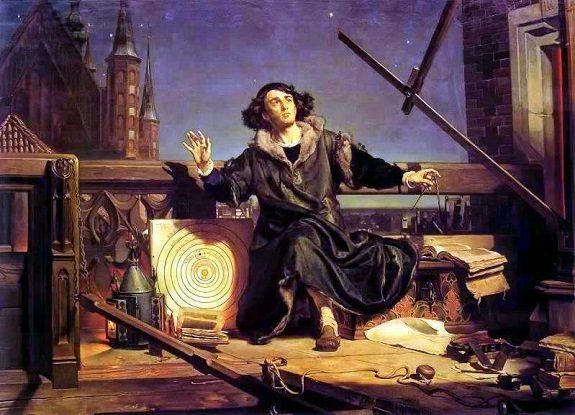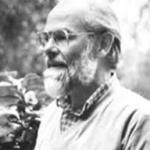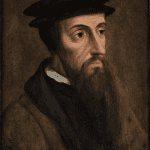***
Protestants, by the way, are not without their own embarrassing errors in this regard. Luther, Calvin, and Melanchthon (and the later Calvinist Francois Turretin) all opposed Copernicus. Luther’s successor Philip Melanchthon and even the renowned Lutheran theologian Martin Chemnitz were enthusiastic advocates of astrology (whereas St. Thomas Aquinas had opposed it 300 years earlier). Leibniz, the Lutheran philosopher (1646-1716) attacked Newton’s theory of gravitation. Lutherans as a whole (at least as much as the entirety of Catholics, if not more so) were very slow to come around to heliocentrism.
But for some reason many of the more loudmouthed and absurdly overconfident advocates of (what they consider essentially materialistic) science and/or critics of Christianity are not so quick to admit that there is more than enough error here (hindsight is 20/20) to go around. Most Catholics in that early period of modern astronomy didn’t get everything right, but neither did anyone else (including even the best scientists) get even some very basic facts of astronomy right. So why is one party excoriated, while the errors of the vaunted (and indeed brilliant) scientists are ignored, unknown, or suppressed, in a cynical effort at one-sided presentation?
The objective observer will note, I submit (upon a complete perusal of the relevant facts), that in most cases of supposed stark opposition of two competing ideas (especially ones as complex as those involved in science and philosophy), there is truth and error to be found on both sides. The reality of various conflicts in the realm of the history of ideas is not usually “good vs. evil.” Just as individuals are radical mixtures, so are sets of ideas: with some falsehood mixed in.
Let me present, if I may, some basic facts:
Copernicus (1473-1543) erred in asserting circular orbits and in holding that the sun was the stationary center of the universe, with not only the earth and the other planets of the solar system, but also all the other stars, moving around it. He also believed that transparent rotating crystalline spheres carried the planets in their orbits.
Tycho Brahe (1546–1601) erred insofar as he was a geocentrist and held (Tychonic “geoheliocentric” system) that the sun and moon revolve around the earth, and the other five planets revolve around the sun: all in circular, not elliptical orbits. Also, in his system the earth did not rotate.
Johannes Kepler (1571-1630) was correct in asserting elliptical orbits of the planets around the sun, at varying speeds (both notions having been foreseen by the Catholic Cardinal Nicholas of Cusa in the 15th century), but continued to err in thinking that the sun was the center of the entire universe. The idea that the sun was but one of innumerable stars, was strongly advocated by the mystic heretic and scientist Giordano Bruno (1548-1600). According to the Wikipedia entry, Bruno understood several aspects of cosmology that even Copernicus, Kepler, Galileo, and Tycho neglected to see:
Bruno believed . . . that the Earth revolves around the sun, and that the apparent diurnal rotation of the heavens is an illusion caused by the rotation of the Earth around its axis. Bruno also held (following Nicholas of Cusa) that because God is infinite the universe would reflect this fact in boundless immensity. Bruno also asserted that the stars in the sky were really other suns like our own, around which orbited other planets. . . .
Bruno’s infinite universe was filled with a substance—a “pure air,” aether, or spiritus — that offered no resistance to the heavenly bodies which, in Bruno’s view, rather than being fixed, moved under their own impetus. Most dramatically, he completely abandoned the idea of a hierarchical universe. The Earth was just one more heavenly body, as was the Sun. . . .
Under this model, the Sun was simply one more star, and the stars all suns, each with its own planets. Bruno saw a solar system of a sun/star with planets as the fundamental unit of the universe. According to Bruno, infinite God necessarily created an infinite universe, formed of an infinite number of solar systems, separated by vast regions full of Aether, because empty space could not exist. (Bruno did not arrive at the concept of a galaxy.)
Galileo (1564-1642) disbelieved in Kepler’s elliptical orbits of the planets, considering the circle the “perfect” shape for planetary orbits:
Galileo’s two main published works were Dialogue Concerning the Two Chief World Systems in 1629 and Discourses and Demonstrations Concerning Two New Sciences in 1638. The first of these was fully ten years after Kepler published his third law of planetary motion, and twenty years after the publication of Kepler’s first and second laws, yet Galileo seemed oblivious to those developments – despite the fact that he was very familiar with Kepler’s works and had high regard for him (referring to him as “a person of independent genius”). Einstein described Galileo’s failure to take account of Kepler’s laws as “a grotesque illustration of the fact that creative individuals are often not receptive”. [source: “Math Pages”]
R. R. Reno referred to this error on 26 July 2010, on the blog First Thoughts (connected with the magazine First Things):
These days no educated person “acknowledges” Galileo’s heliocentric theory as “correct.” Galileo adopted Copernicus’s theory, which presumed lovely circular orbits, but that turns out to be wrong. Tycho Brahe painstakingly collected data about the positions of the planets in the sky, which was theorized by Johannes Kepler as eliptical rather than circular motion.
Interestingly, Kepler and Galileo corresponded, but Galileo insisted on defending Copernicus’ views. On this point, Galileo was mistaken, and not just because he did not have access to the scientific data and good arguments. He was, like many brilliant individuals, a vain and willful man.
Scott Rosmarin, in his article, “Galileo’s Lapse – The Fallibility of Scientists” (29 March 2010), noted:
Johannes Kepler had provided plausible evidence that the planets move in elliptical, nor circular orbits, and not at uniform speeds, but variable speeds, depending on their distance from the sun. This seriously challenged the Copernican view. Galileo . . . simply rejected Kepler’s view, clinging instead to the ancient belief that circular motion was “beautiful” and, therefore, privileged. . . . Galileo believed dogmatically in the Copernican view, not merely as a good starting hypothesis, or true subject to possible modifications, such as those offered by Kepler.
Galileo was also wrong in following Copernicus’s (and Kepler’s) view that the sun was the stationary center of the universe, with the earth and other planets of the solar system, and also all the other stars, moving around it. In this respect, he and Copernicus had hardly advanced beyond what was already posited by the ancient Greek astronomer Aristarchus (d. c. 230 B. C.). All three had merely moved the center of the universe 93 million miles from the earth, to the sun.
That is not all that different (knowing how large the universe is) from positing that the earth is the center. Both are vastly erroneous positions. But, oddly enough, we only hear about one error and not the other. Nicholas of Cusa (a Catholic Cardinal) and Giordano Bruno were closer to the truth in these respects than Copernicus, Galileo, and Kepler. Truth is stranger than fiction.
Galileo, moreover, argued vehemently in his 1623 book The Assayer that the comets of 1618 were merely an optical illusion. The Wikipedia entry on the book states:
The book was a polemic against the treatise on the comets of 1618 by Orazio Grassi, a Jesuit mathematician at the Collegio Romano. In this matter Grassi, for all his Aristotelianism, was right and Galileo was wrong. Galileo incorrectly treated the comets as a play of light rather than as real objects. . . .
Although The Assayer contains a magnificent polemic for mathematical physics, ironically its main point was to ridicule a mathematical astronomer. This time, the target of Galileo’s wit and sarcasm was the cometary theory of a Jesuit, Orazio Grassi, who argued from parallax that comets move above the Moon. Galileo mistakenly countered that comets are an optical illusion.
The Wikipedia article, “Comet,” observed that Galileo “rejected Tycho’s parallax measurements and held to the Aristotelian notion of comets moving on straight lines through the upper atmosphere.”
Furthermore, Galileo dismissed as a “useless fiction” the idea, held by his contemporary Johannes Kepler, that the moon caused the tides. He thought they were caused by the rotation of the earth. The Stanford Encyclopedia of Philosophy entry on Galileo comments on this notion and how it figured in the overall picture:
This argument, about the tides, Galileo believed provided proof of the truth of the Copernican theory. . . . Galileo argues that the motion of the earth (diurnal and axial) is the only conceivable (or maybe plausible) physical cause for the reciprocal regular motion of the tides. He restricts the possible class of causes to mechanical motions, and so rules out Kepler’s attribution of the moon as a cause. How could the moon without any connection to the seas cause the tides to ebb and flow? Such an explanation would be the invocation of magic or occult powers. So the motion of the earth causes the waters in the basins of the seas to slosh back and forth, and since the earth’s diurnal and axial rotation is regular, so are the periods of the tides; the backward movement is due to the residual impetus built up in the water during its slosh. Differences in tidal flows are due to the differences in the physical conformations of the basins in which they flow . . . .
One can see why Galileo thinks he has some sort of proof for the motion of the earth, and therefore for Copernicanism. Yet one can also see why Bellarmine and the instrumentalists would not be impressed. First, they do not accept Galileo’s restriction of possible causes to mechanically intelligible causes. Second, the tidal argument does not directly deal with the annual motion of the earth about the sun. And third, the argument does not touch anything about the central position of the sun or about the periods of the planets as calculated by Copernicus.
Galileo (like Kepler) was an avid proponent of astrology (see “Galileo’s Astrology,” by Nick Kollerstrom). For example, he wrote in a letter to Piero Dini, dated 21 May, 1611:
If, therefore, of the inferior causes, those which arouse boldness of heart are diametrically contrary to those which inspire intellectual speculation, it is also most reasonable that the superior causes (if indeed they operate on us) be utterly different from those on which courage and the speculative faculty depend; and if the stars do operate and influence principally by their light, perchance it might be possible with some probable conjecture to deduce courage and boldness of heart from very large and vehement stars, and acuteness and perspicacity of wit from the thinnest and almost invisible lights.
(From Kollerstrom; Opere XI pp.105-116,111; translation by Mike Edwards)
Galileo drew up astrological charts for his two illegitimate daughters, and composed character-judgments based upon them. For his oldest, Virginia, he noted:
The Moon is very debilitated and in a sign which obeys. She is dominated by family relationships. Saturn signifies submission and severe customs which gives her a sad demeanour, but Jupiter is very well with Mercury, and well-aspected corrects this. (Ibid.)
Galileo was not always right in his controversies with the Church. Eminent philosopher and historian of science Thomas Kuhn observed:
Most of Galileo’s opponents behaved more rationally. Like Bellarmine, they agreed that the phenomena were in the sky but denied that they proved Galileo’s contentions. In this, of course, they were quite right. Though the telescope argued much, it proved nothing.
[The Copernican Revolution (New York: Vintage Books / Random House, 1959), p. 226]
I wrote elsewhere:
But the scientist (though basically correct) was overconfident and quite obstinate in proclaiming his scientific theory as absolute truth, and this was a major concern. Accordingly, St. Robert Bellarmine, who was directly involved in the controversy, made it clear that heliocentrism was not irreversibly condemned, and also that a not-yet proven theory was not an unassailable fact. Bellarmine actually had the superior understanding of the nature of a scientific hypothesis. Galileo was scientifically fallible, too. He held that the entire universe revolved around the sun in circular (not elliptical) orbits, and that tides were caused by the rotation of the earth. True heliocentrism wasn’t conclusively proven until some 200 years later.
Lastly, in my treatment of Galileo in my book, The One-Minute Apologist (p. 31), I dealt with the common notion that Galileo was tortured and maliciously handled by the Church:
In 1633 Galileo was “incarcerated” in the palace of one Niccolini, the ambassador to the Vatican from Tuscany, who admired Galileo. He spent five months with Archbishop Piccolomini in Siena, and then lived in comfortable environments with friends for the rest of his life (although technically under “house arrest”). No evidence exists to prove that he was ever subjected to torture or even discomfort until his death nine years later. Nor is there any evidence, as another myth goes, that he was deliberately blinded (he lost his sight naturally in 1637). Stories of Galileo’s “torture” are myths invented and proliferated by a strange alliance of (anti-Catholic) fundamentalist and (anti-religion) skeptics.


















